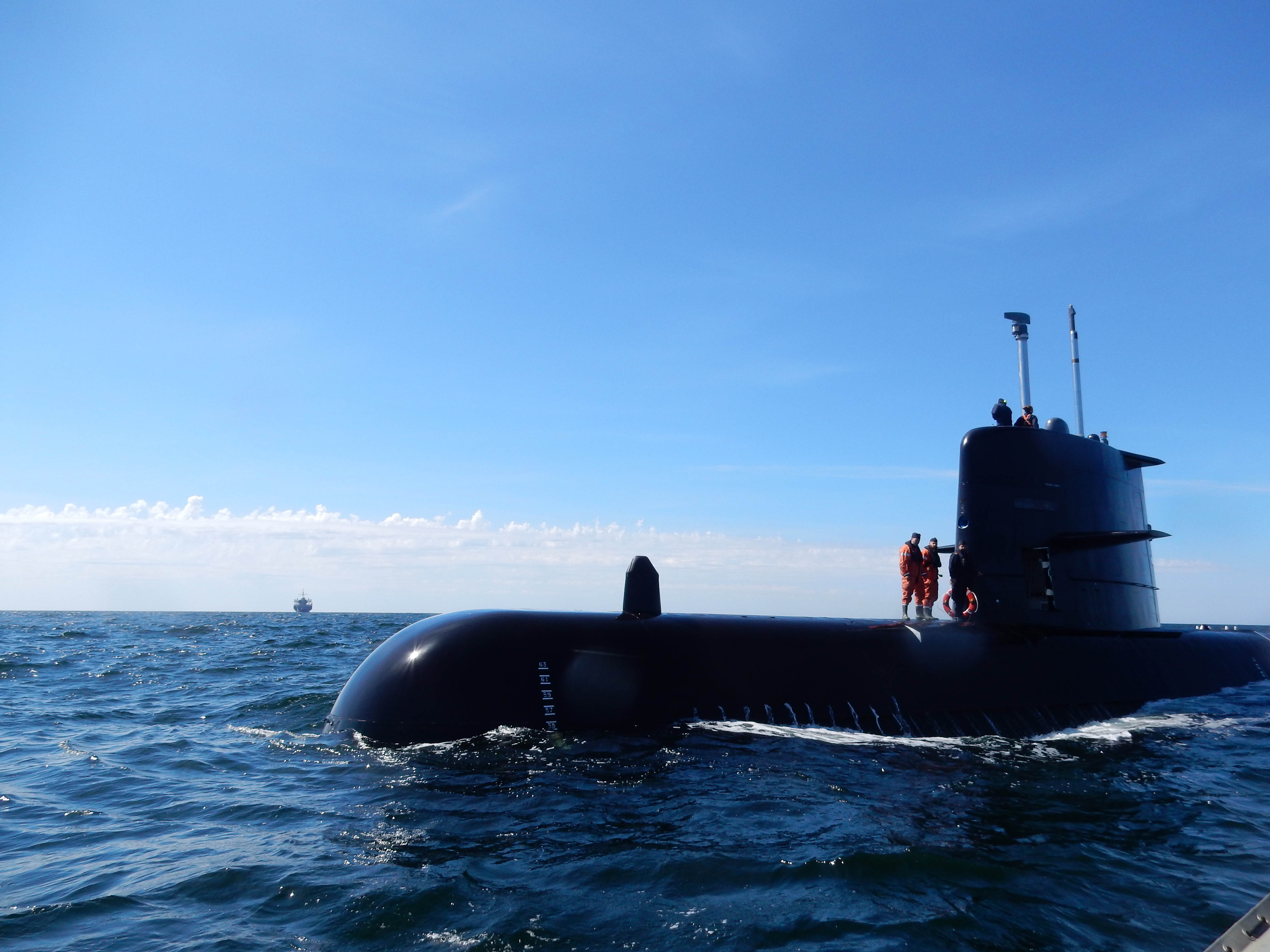‘Tough questions’ ahead in deciding future of Canada’s submarine fleet
After Australia reversed course and decided to acquire nuclear-powered submarines instead of conventionally-powered ones, could Canada make the same decision?
After Australia partnered with the United States and United Kingdom to acquire eight nuclear-powered submarines, experts say Canada will face tough decisions on the type of submarine it procures with a distant, but fast approaching, timeline looming if it wants to keep its submarine capacity afloat.
The need to maintain the Canadian Navy’s submarine capabilities was highlighted in the government’s 2017 defence policy review, Strong, Secure, Engaged, but it did not outline when replacements for Canada’s four Victoria-class submarines would be procured.
In July, the Canadian Press reported that the military had created a team to analyze what is needed in a future submarine fleet for Canada.
That team will likely be focused on determining the type and size of submarine that Canada should acquire, as well as the tools and systems it requires, according to experts. That could include deciding whether Canada should purchase conventional-powered submarines or costlier nuclear-powered ones.
Navy spokesperson Lt.-Cmdr. Jordan Holder said in an email that the Canadian Forces is establishing the “Canadian Patrol Submarine Project to inform timely governmental decision-making about a potential replacement class of submarines, and to avoid any gap in submarine capability.”
He didn’t address what kind of timeline would be needed for the procurement of a future submarine fleet.
“Timelines for large and complex defence procurement projects can be lengthy from project establishment to first delivery, to completion,” he noted.
After initially aiming to purchase conventionally-powered submarines from France, Australia reversed course and decided to buy eight nuclear-powered underwater vessels as part of the recent three-nation defence pact known as AUKUS—an agreement that goes well beyond submarine purchases, including “cyber capabilities, artificial intelligence, quantum technologies and additional undersea capabilities.”
Australia’s decision to acquire a fleet of nuclear-powered submarines may impact a future Canadian submarine procurement, said Jeffrey Collins, who recently published a Macdonald-Laurier Institute report on the future project, titled Deadline 2036: Assessing the requirements and options for Canada’s future submarine force—a reference to the year in which Canada’s current Victoria-class submarines could start to be decommissioned as they approach the 50th anniversary of their initial launch.
He said Australia is one of the few countries with “parallel submarine requirements” as Canada, with a large coastline, similar populations, comparable economic strength, and both being close allies to the United States. He noted that Canada’s current fleet is similar to Australia’s current diesel-powered Collins-class submarines.
“The [AUKUS pact] throws open the idea that we probably should put nuclear SSNs on the table as an option to just see what that looks like,” said Mr. Collins, a fellow at the Canadian Global Affairs Institute and an expert on defence policy and procurement.
He noted that when the Canadian government last had discussions about acquiring nuclear-powered submarines in the 1980s, the U.S. and the U.K. were unwilling to share the technology.
Navy spokesperson Lt.-Cmdr. Holder wouldn’t address a question on whether Canada would consider procuring nuclear-powered submarines.“ At this stage, our focus is on standing up the Canadian Patrol Submarine Project, which will be responsible for investigating all available options and responding to any questions the government may have, as it makes any required policy decisions,” he said.
Former naval officer Norman Jolin, who served on both submarines and surface ships during a 37-year career in the Canadian Armed Forces, said Australia has the same requirements as Canada does and there is only one submarine that can fulfill those needs—one that is nuclear-powered.
But, he suggested that won’t be the submarine that Canada acquires.
“Canada will not be looking at nuclear submarines to replace the current submarines—that’s just a non-starter,” said Mr. Jolin, now an associate consultant at CFN, referencing having been assigned to look at the procurement of nuclear submarines while with the CAF in the 1980s, which was ultimately pushed aside due to economic constraints.
“The nation gets the navy it can afford,” he said.
But he said Canada could acquire nuclear submarines, if it wanted to.
Canadian submarines need to go long distances, and do so covertly, he said, which is done better by nuclear-powered submarines as they don’t have to resurface to charge their batteries. Nuclear-powered submarines, he added, have increased under-ice capabilities, which allows them to better operate in the Arctic.
Mr. Jolin noted that advances in technology have enabled conventionally-powered submarines to operate in the Arctic along the ice edge, and use autonomous underwater vehicles.
He said Canada must figure out how it can procure a submarine for what it needs.
Conservative MP-elect James Bezan (Selkirk-Interlake-Eastman, Man.), his party’s defence critic during the last Parliament (critics for the new Parliament have yet to be named), said Canada needs submarines with under-ice capabilities to patrol Canada’s Arctic and affirm sovereignty.
“We have to look at exactly what capability we need,” Mr. Bezan said. “Can we procure that capability and manufacture it domestically? If the answer is that we don’t have the capabilities of something like a nuclear-powered submarine, then we need to look at buying off the shelf from one of our allies.”
He added buying a submarine from an ally could shorten the procurement timeline.
“If there are out there submarines that can stay extended times—diesel or electric—under the ice and have the ability to punch through ice when needed, then that also changes the dynamics [in] exactly the type of submarines that are required,” he said.
Risk of losing Canada’s submarine capacity
Due to the complexity and long timelines that come with naval procurements, naval experts say there is a need to get moving on procuring a future submarine fleet as major capital projects generally take 15 years. The government’s own 2017 review found that 70 per cent of major procurement projects are delayed.
Mr. Collins said Canada “really runs the risk” of losing its submarine capability if delays complicate the procurement.
The current fleet of submarines might have to be removed from the water before a new procurement is finalized if they become too risky to operate, or they might have to be modernized again, Mr. Collins said.
The Victoria-class submarines are currently going through a modernization to extend their life cycle and “continued effectiveness out to the mid-2030s,” as described in the 2017 report.
Another complicating factor is that the traditional builders of Canadian submarines—the United States and the United Kingdom—no longer make conventionally-powered submarines.
“We have some tough questions to answer and really in the next few years [as] we don’t have much time,” said Mr. Collins.
Mr. Bezan said he doesn’t know whether Canada has until upwards of 2040 to replace the Victoria-class submarines.
“[They] have had numerous problems in staying out of dry dock and being in service,” he said. “If we’re going to be serious about securing our own sovereign territory—up and down the coasts on all three shorelines—then we better procure that capability sooner than later.”
Mr. Jolin said delivery of the first unit for a major procurement like a new submarine fleet could take 18 to 20 years. The timeline, he said, is complicated as the submarine that Canada wants doesn’t yet exist.
“We want something that’s big. It’s got to be ocean going,” he said, but noted that most submarine designers and builders are European, and they don’t build large submarines as they don’t need them to traverse the Baltic Sea.
He said Canada’s next submarine would likely need to be bigger than the Victoria-class submarines to provide for increased range, suggesting they should be in the range of around 3,000 to 4,000 tonnes.
He said those who are building submarines that big are generally making nuclear-powered ones.
An added complication will be whether the government requires a made-in-Canada approach to build the submarines, Mr. Jolin said.
The infrastructure at shipyards needed to build such vessels is much different than what is needed to construct any other naval ships, and there isn’t a Canadian shipyard that currently has the infrastructure to build a complete submarine, he said.
How many subs does Canada need?
Another thing the government will have to decide is how many submarines it wants in a new fleet.
A 2017 report by the Senate Committee on National Security and Defence recommended the government acquire 12 submarines.
Mr. Bezan said he didn’t disagree with the Senate report, but noted he would leave it to the experts to decide what number of submarines the navy needs.
Mr. Jolin said it makes sense to have 12 submarines as the minimum that is needed in one geographic area is six, which would allow Canada to have six stationed in the Pacific and six in the Atlantic.
White Paper reviews and parliamentary committee recommendations have traditionally gone with a higher number of submarines than ended up being acquired, Mr. Collins noted. Currently having only two submarines each on the west and east coasts limits the navy’s capabilities.
If a future fleet of submarines does operate in the Arctic, it will require Canada to have more than four submarines as it brings a third ocean into its operating theatre, Mr. Collins said.











